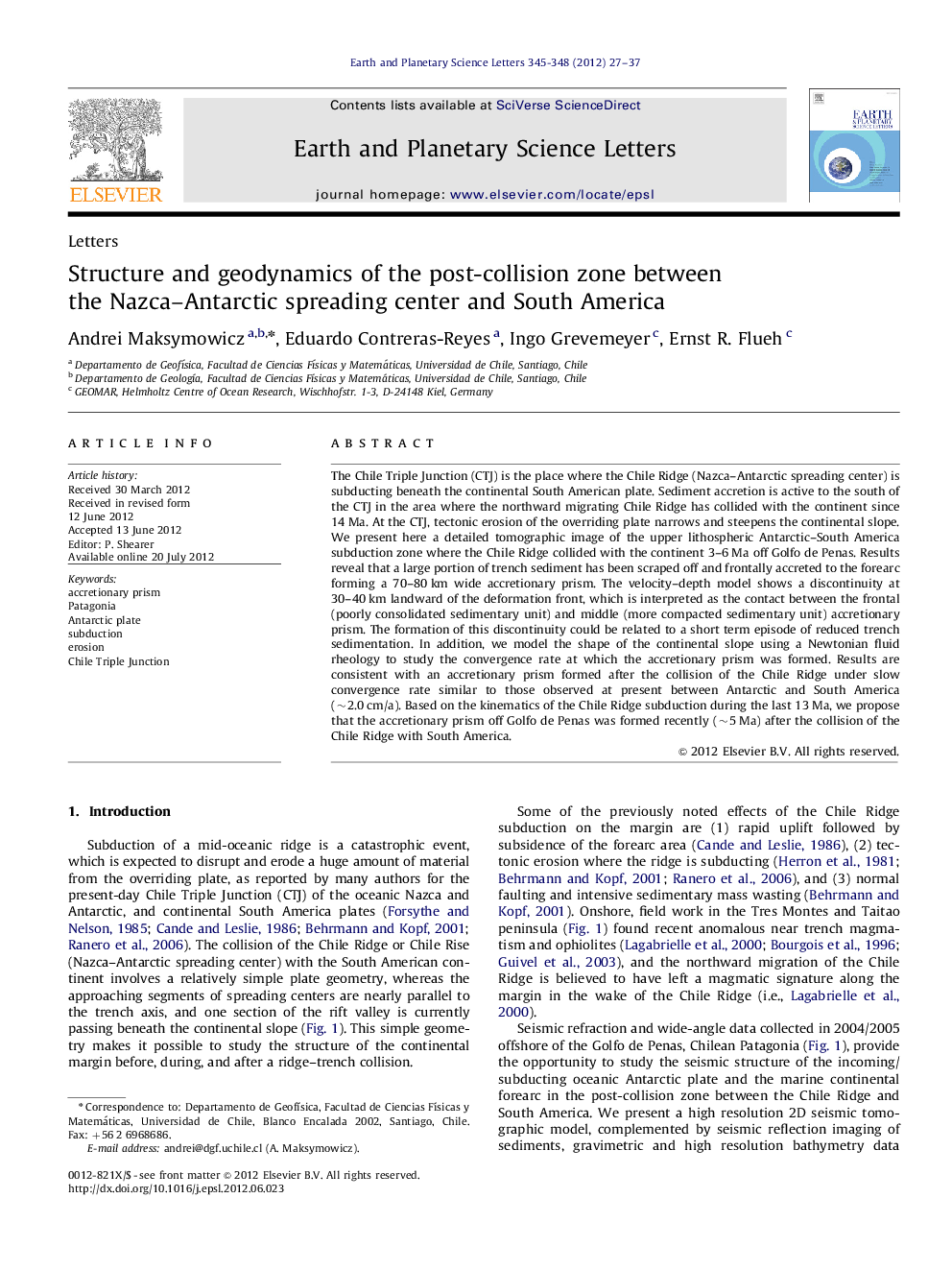| کد مقاله | کد نشریه | سال انتشار | مقاله انگلیسی | نسخه تمام متن |
|---|---|---|---|---|
| 6430559 | 1634799 | 2012 | 11 صفحه PDF | دانلود رایگان |

The Chile Triple Junction (CTJ) is the place where the Chile Ridge (Nazca-Antarctic spreading center) is subducting beneath the continental South American plate. Sediment accretion is active to the south of the CTJ in the area where the northward migrating Chile Ridge has collided with the continent since 14Â Ma. At the CTJ, tectonic erosion of the overriding plate narrows and steepens the continental slope. We present here a detailed tomographic image of the upper lithospheric Antarctic-South America subduction zone where the Chile Ridge collided with the continent 3-6Â Ma off Golfo de Penas. Results reveal that a large portion of trench sediment has been scraped off and frontally accreted to the forearc forming a 70-80Â km wide accretionary prism. The velocity-depth model shows a discontinuity at 30-40Â km landward of the deformation front, which is interpreted as the contact between the frontal (poorly consolidated sedimentary unit) and middle (more compacted sedimentary unit) accretionary prism. The formation of this discontinuity could be related to a short term episode of reduced trench sedimentation. In addition, we model the shape of the continental slope using a Newtonian fluid rheology to study the convergence rate at which the accretionary prism was formed. Results are consistent with an accretionary prism formed after the collision of the Chile Ridge under slow convergence rate similar to those observed at present between Antarctic and South America (â¼2.0Â cm/a). Based on the kinematics of the Chile Ridge subduction during the last 13Â Ma, we propose that the accretionary prism off Golfo de Penas was formed recently (â¼5Â Ma) after the collision of the Chile Ridge with South America.
⺠We present a velocity model for the Antarctic-South American subduction zone. ⺠Results show effective sediment accretion south of the Chile Triple Junction (CTJ). ⺠The accretionary prism south of CTJ was formed â¼5 Ma after the ridge-trench collision.
Journal: Earth and Planetary Science Letters - Volumes 345â348, September 2012, Pages 27-37